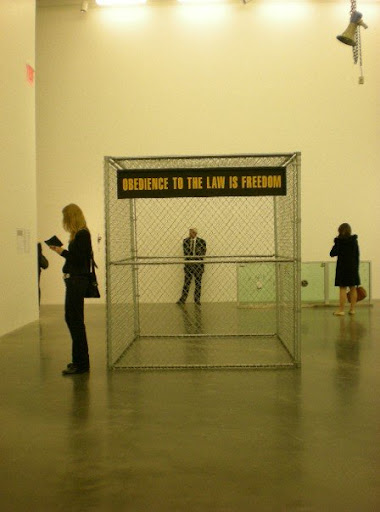Landscape (or the formatting of paper in a printer)
Dawn Blackman (Brooklyn)
Colin Brant (Brooklyn/Vermont)
Kristopher Benedict (Brooklyn)
Marcus Civin (Los Angeles)
Luke Dowd (London)
Dan Fischer (Bay Shore, NY)
Lydia Moyer (VA)
Adam Padavano (NJ)
Hendrik Krawen (Berlin)
William stone (NY)
Within forces of new technology and preservation of society and its relics in a naturalized landscape, a parallel and a disconnect exists between the natural and the created. This proposal for exhibition examines the ends of both extremes, romanticism in the landscape as represented by painting, work on paper, sculpture, and new media.
Environmental Conservationists / Forresters / Pioneers set forth the rules of the land designating where and how the future generations will interact with nature and the natural environment. Environmental politics is not new terminology, first instilled in American politics before Westward Expansion, marking off national treasures in the splendor of the natural landscape in the form of National Parks. The first instinct and reactions to finding the land was to keep it intact for future generations. It is valuable to point
out that these first environmentalists threw up red flags to even putting in service roads, noting once a footpath had been notched, the path would subsequently widen.
Anne Whiston Spirn writes in The City as a Garden, "The city must be recognized as part of nature and designed accordingly. Cities, their suburbs and countryside must be viewed as a single, evolving system within nature, as must every individual park and building within that larger whole. The social value of nature must be cultivated, like a garden, rather than ignored or subdued."
This is Romanticism, however, not utopian.
As a growing and moving society, we are overwhelmed with technology, invention and idea. Preservation becomes standardized adding of more rules, and perhaps it maybe less impactful. The system in place may not be even understood by fellow man, the unpracticing, unlooking, industry heavy individual. He longs to leave the city, bring the city with him, and breathe the fresh air and carefree with the kids. He uses nature and the city uses him. He is a tool and nature becomes a tool for him; meditation spot or something to look forward to.
This is our technologically advanced society.
Setting forth with new media, Lydia Moyer explores Romanticism and depiction of landscapes with looping video feeds that could aptly be moving paintings. Hendrik Krawen fastidiously paints industry, pollution, and the human impact on and into the landscape. Dan Fischer’s work is art historical, as well as Romantic, as he once described to me as “graphite dreams.” Luke Dowd’s Gem Collection, work on paper, represents the romantic and societal valued appeal of mineral and stones with use of spray paint. Kristopher Benedict’s paintings are vivid and poignantly psychedelic in chroma. They are urban yet provincial in an early series entitled “Park Paintings.” Dawn Blackman and Adam Padavano’s works both descriptively add to the landscape as the
depictions of the society, the individuals who embark and interact with these variable landscapes. Blackman explores dualities, as Adam depicts leisure and activity within the characters environment. With just glimmers of human presence in painted landscapes, Colin Brant’s paints the most desirable conditions for the Romantic. They remain desolate yet full of
nature, without a human presence, except perhaps in their corners. Like Westward Expansion, the human impact upon the landscape perceived, but the paintings require much exploration.
The exhibition would also be represented with writing, in form of poetry or prose, in sculptural form by Marcus Civin. As he writes, “I was raised next to an orchard, next to an abandoned military base. I would ride my BMX and tilt my head back to look straight up. There was no need to look forward; my wheels—sewing seeds like tractor pulls—knew the dry cracked passages.
Evening. Stars starting. And, could almond trees be that tall?” in a work entitled Painting. His allegory is deep within art and landscape. William Stone also works within sculpture exploring found objects, using timber and wood, lightly playing with language and materiality. Stone also appropriates and modifies found landscape paintings.
Viably all artists represented in this proposed exhibition have a connection to my professional and private life. Some are friends, some schoolmates, a past professor, and two represented by gallerists whom I professionally admire. As Kenneth Koch was once quoted, "One of the most wonderful ways in the world to be with someone's sweetness and brilliance is to collaborate with that person...I like collaborating the way people like drinking.Collaborating was making a game out of social life."

john muir and theodore roosevelt























